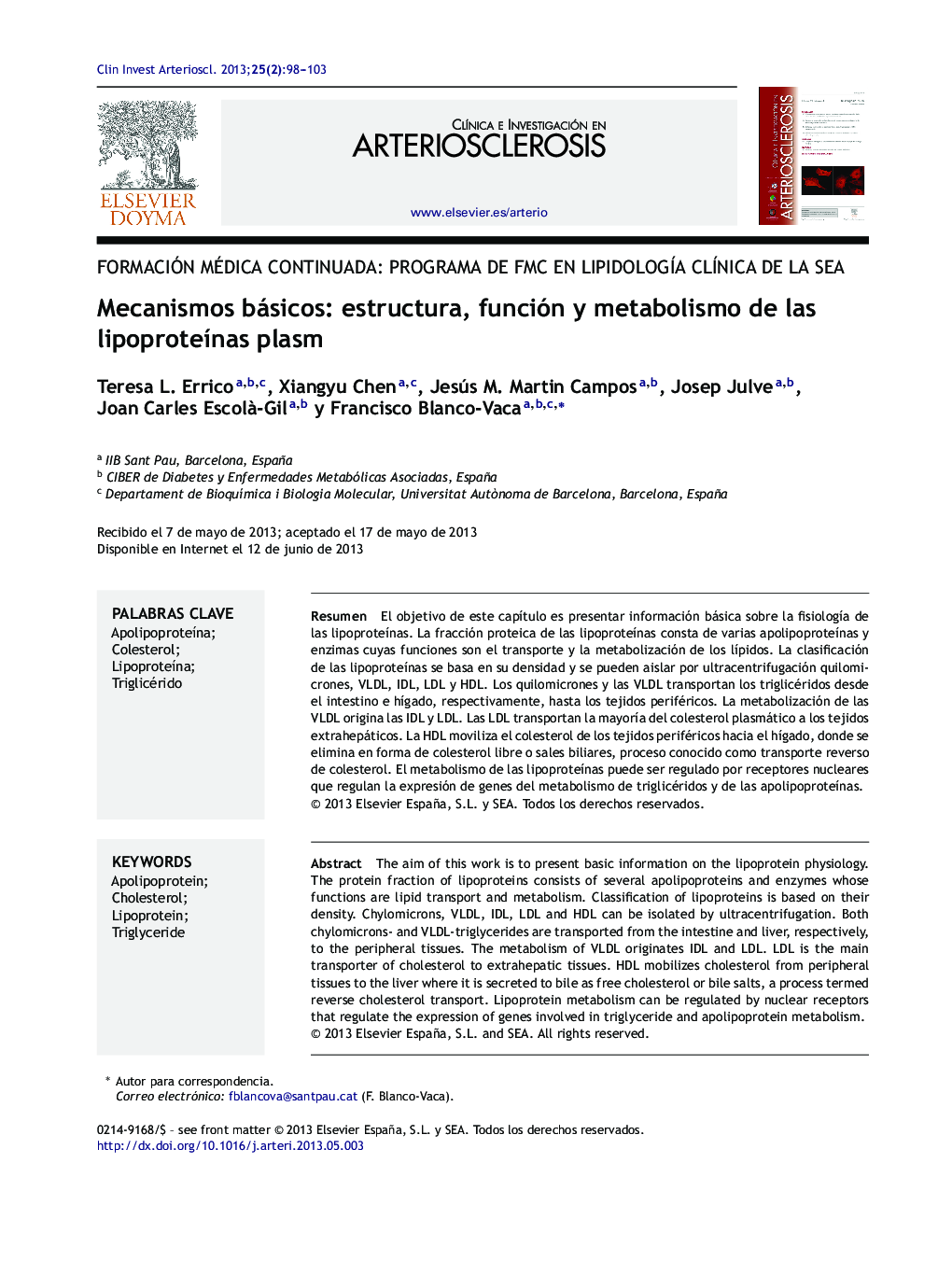| Article ID | Journal | Published Year | Pages | File Type |
|---|---|---|---|---|
| 2839698 | Clínica e Investigación en Arteriosclerosis | 2013 | 6 Pages |
Abstract
The aim of this work is to present basic information on the lipoprotein physiology. The protein fraction of lipoproteins consists of several apolipoproteins and enzymes whose functions are lipid transport and metabolism. Classification of lipoproteins is based on their density. Chylomicrons, VLDL, IDL, LDL and HDL can be isolated by ultracentrifugation. Both chylomicrons- and VLDL-triglycerides are transported from the intestine and liver, respectively, to the peripheral tissues. The metabolism of VLDL originates IDL and LDL. LDL is the main transporter of cholesterol to extrahepatic tissues. HDL mobilizes cholesterol from peripheral tissues to the liver where it is secreted to bile as free cholesterol or bile salts, a process termed reverse cholesterol transport. Lipoprotein metabolism can be regulated by nuclear receptors that regulate the expression of genes involved in triglyceride and apolipoprotein metabolism.
Related Topics
Life Sciences
Biochemistry, Genetics and Molecular Biology
Physiology
Authors
Teresa L. Errico, Xiangyu Chen, Jesús M. Martin Campos, Josep Julve, Joan Carles Escolà -Gil, Francisco Blanco-Vaca,
